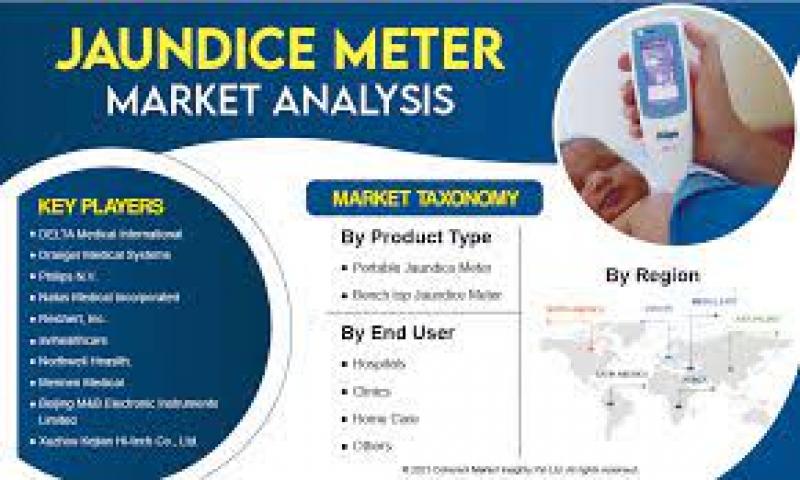Jaundice, a condition characterized by yellowing of the skin and eyes, is a common medical concern, especially in newborns. It occurs due to an excess accumulation of bilirubin in the blood, a yellow pigment formed during the breakdown of red blood cells. Monitoring bilirubin levels is crucial to prevent potential complications, and the Jaundice Meter plays a pivotal role in this process. In this article, we will delve into the significance and functionality of the Jaundice Meter, shedding light on its essential role in healthcare.
The Jaundice Meter, also known as a bilirubinometer or transcutaneous bilirubinometer, is a non-invasive medical device used to measure the level of bilirubin in a patient's blood. Unlike traditional methods that involve blood tests, the Jaundice Meter offers a safer and more convenient approach, especially for newborns, who may find blood tests distressing and uncomfortable.
The device works based on the principle of light absorption. It emits light of a specific wavelength into the skin, and the amount of light absorbed by the bilirubin in the blood is measured. By calculating the intensity of light transmitted through the skin, the Jaundice Meter provides an estimation of the bilirubin levels in the patient's bloodstream.
One of the significant advantages of using a Jaundice Meter is its non-invasive nature. Healthcare professionals can simply place the device on the baby's forehead or sternum, or in the case of adults, on the skin overlying the liver, to obtain a reading. This procedure is quick, painless, and does not require any blood extraction, making it particularly suitable for monitoring bilirubin levels in infants.
The Jaundice Meter's efficiency and accuracy have been the subject of numerous studies. While it may not completely replace blood tests in all situations, it serves as an excellent screening tool, allowing healthcare providers to identify patients at risk of severe jaundice and promptly initiate further evaluations or interventions when necessary.
Furthermore, the Jaundice Meter is highly beneficial in resource-limited settings, where access to sophisticated laboratory facilities might be limited. Its portability and ease of use make it a valuable asset for healthcare practitioners working in remote areas or under challenging conditions.
However, it's important to note that the Jaundice Meter's readings may be affected by various factors, such as skin color, skin thickness, and the presence of any skin conditions or pigmentation. As a result, it is considered a supplementary tool rather than a definitive diagnostic method. When there are concerns about the accuracy of the readings or if bilirubin levels are significantly elevated, healthcare professionals may still opt for a blood test to confirm the diagnosis.
In neonatal care, the Jaundice Meter has revolutionized the management of jaundice in newborns. Since newborns have immature liver function, they are more susceptible to jaundice. Timely monitoring and intervention are crucial to prevent complications such as kernicterus, a rare but severe condition where bilirubin accumulates in the brain, leading to neurological damage.
Regular bilirubin level checks with the Jaundice Meter enable healthcare providers to assess a newborn's risk and determine if phototherapy, a light-based treatment that helps break down excess bilirubin, is necessary. By using the Jaundice Meter, healthcare professionals can track bilirubin levels over time and make informed decisions about the most appropriate course of action.
In conclusion, the Jaundice Meter is a valuable tool in the medical field, especially for monitoring and managing jaundice, both in infants and adults. Its non-invasive nature, portability, and quick results make it an indispensable asset for healthcare providers, particularly in settings where resources may be limited. However, while it serves as an excellent screening tool, it should always be used in conjunction with other diagnostic methods to ensure accurate and comprehensive patient care. The Jaundice Meter continues to shine a light on jaundice, aiding in the early detection and effective management of this common medical condition.
